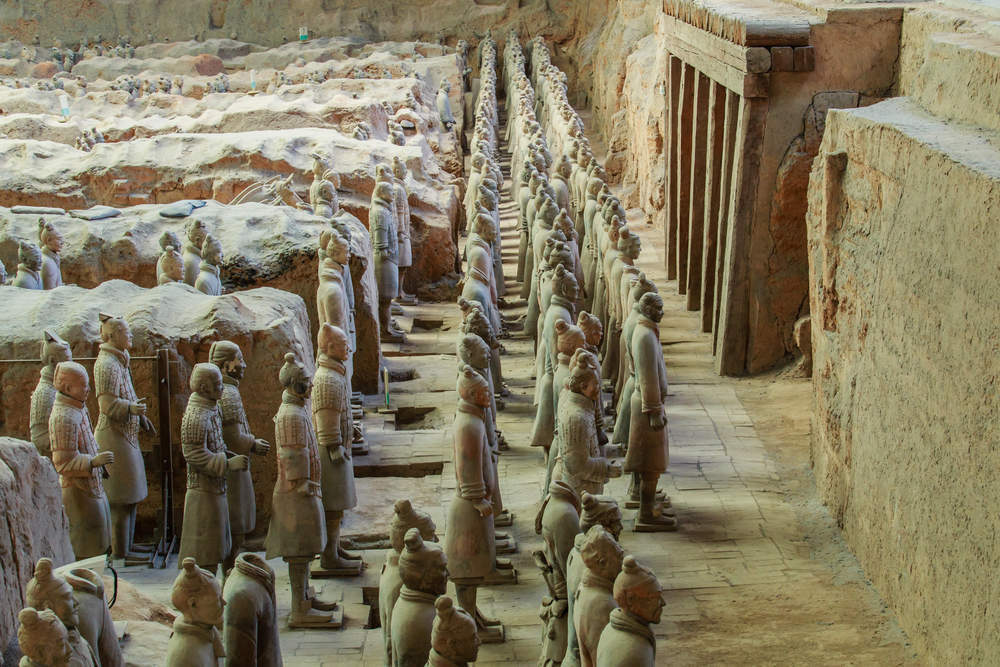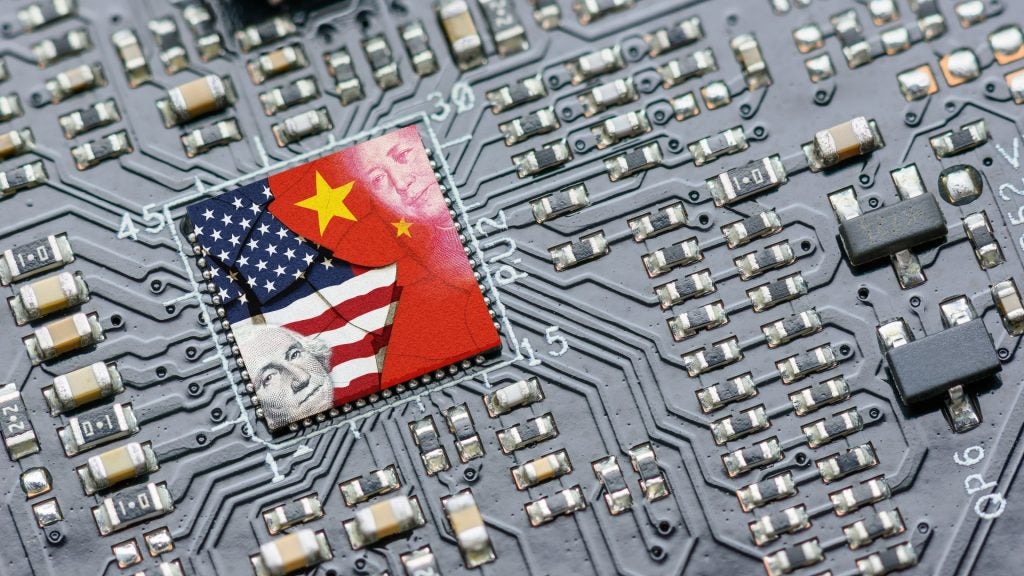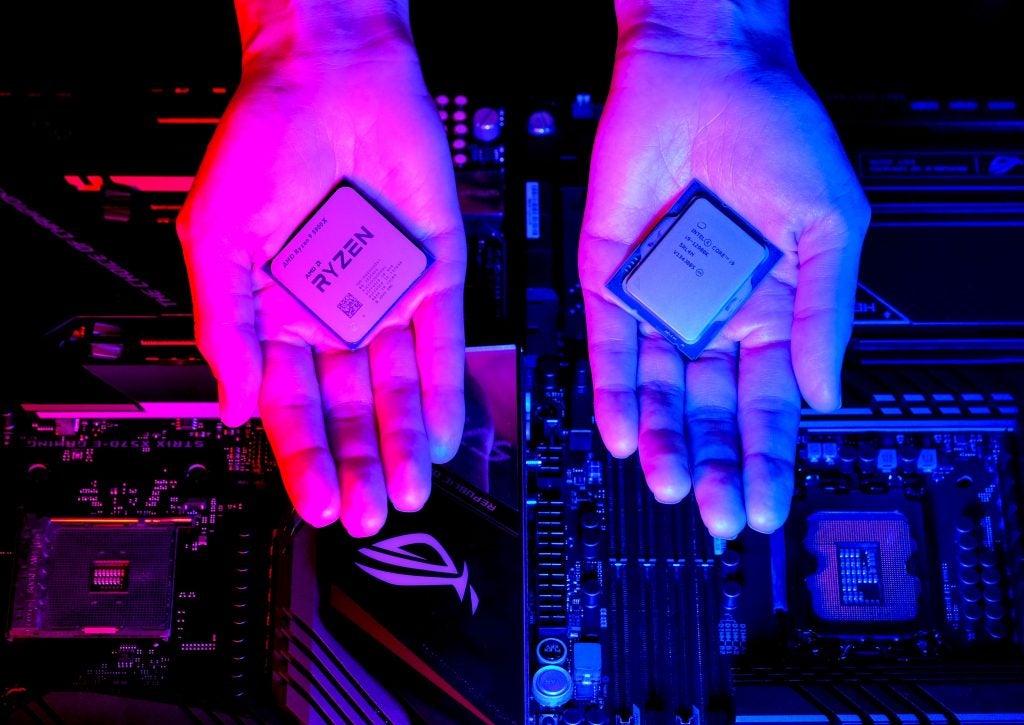
Terracotta warriors from the tomb of China’s First Emperor, Qin Shihuangdi, are returning to the UK for the first time in a decade to feature in an exhibition in Liverpool.
The 10 life-sized figures, including a terracotta cavalry horse, will be on display at Liverpool’s World Museum.
The exhibition will also feature over 180 Chinese artefacts from the violent turbulent period that preceded Qin Shihuangdi’s reign to the Emperor’s legacy in the Han Dynasty (206 BC to AD 220). Some of the pieces have never before been displayed in the UK since they have only been excavated recently from the Imperial Mausoleum.
National Museums Liverpool has created a visual history of China from the modern day to 307BC when the pre-unification Qin period began.
Its specialists have worked to create a pictorial representation of Emperor Qin’s whole burial site based on descriptions made by Chinese archaeologists to give visitors a sense of the size of the tomb.
The exhibition opens on 9 February and will run until 28 October.
How well do you really know your competitors?
Access the most comprehensive Company Profiles on the market, powered by GlobalData. Save hours of research. Gain competitive edge.

Thank you!
Your download email will arrive shortly
Not ready to buy yet? Download a free sample
We are confident about the unique quality of our Company Profiles. However, we want you to make the most beneficial decision for your business, so we offer a free sample that you can download by submitting the below form
By GlobalDataThe terracotta warriors were first exhibited in the UK in 1985 when they featured in an exhibition at Edinburgh’s City Art Centre. 225,000 people visited the Chinese soldiers.
In 2007-8, the warriors returned to the UK as the core of an exhibition about Emperor Qin Shihuangdi in the newly expanded Reading Room of the British Museum. This saw the largest number of warriors ever displayed outside of China.
Attracting around 850,000 visitors, the First Emperor: China’s Terracotta Army was the second most-visited exhibition in the British Museum’s history after Tomb of Tutankhamun in 1980.
According to Travel China Guide, China’s terracotta army has been exhibited in 33 countries since it was discovered.
These range from Ireland, Colombia, New Zealand, Russia, South Korea and Mexico. Outside of China, they have been displayed the most times in Japan.
The number of warriors who have been on display at each exhibition has widely varied.
What was said:
National Museums Liverpool director David Fleming said:
The Terracotta Warriors exhibition is surely one of the most important exhibitions we have ever held here. We cannot wait to share this spectacular show with the city’s people and welcome visitors from across the UK to witness this unmissable opportunity to see some of the Terracotta Army up close.
Wu Haiyun, project manager at Shaanxi Cultural Heritage Promotion Centre, told Chinese newspaper, Xinhua:
We are delighted to bring this exhibition to Liverpool, featuring some of artefacts never previously displayed in Britain. I hope people who visit the exhibition wil have a better understanding of our history and culture. I also hope it will inspire people to visit China, and also Shaanxi where they can see the Terracotta Warriors in the area where they were discovered.
The UK’s cultural secretary Matt Hancock said:
The Terracotta Warriors are an iconic cultural treasure produced by ancient China. Bringing them to Liverpool is a real ..testament to the strength of the UK-China cultural relationship. This exhibition will boost tourism to the region and attract visitors from across the UK and Europe.
What this means:
The popularity of the Chinese terracotta warriors has been huge as is shown by the huge variety of cities and countries who have exhibited certain specimens, many on multiple occasions.
In addition, visitors can visit a section of the burial site in Xian, Shaanxi province where hundreds of warriors are laid out in their original format.
Although the Chinese state remains secretive about the burial site, and have recently halted excavation over concerns about the contents of the tomb, the fact that it has realised the touristic benefit from loaning such unique historical artefacts to cultural institutions and thus cultivating wider interest in Chinese history.
It will be interesting to observe the effect another exhibition of the terracotta warriors in the UK will have on increasing tourist numbers to China, especially in the context of the country’s rising coverage in the British press.
Background:
The first terracotta warrior was discovered in 1974 by villagers when they were digging a well. They contacted the Chinese authorities who sent a team of archaeologists to excavate the site. Very quickly thousands more clay soldiers were discovered organised in trenches alongside horses and wooden chariots.
It was discovered that the warriors guarded the tomb of the Emperor who united waring Chinese provinces in 221BC, Qin Shihuangdi.
Emperor Qin Shinhuangdi has been credited with laying the foundations of modern China. In addition to uniting the provinces into one state, during his reign from 221 to 210BC he create a penal code and a single currency, standardised weights and measures and imposed a common written language and bureaucracy across the country.
Each terracotta warrior is based upon one of the Emperor’s actual soldiers and thus is unique. Currently three pits filled with over 2,000 statues have been unearthed, as well as some smaller pits surrounding the tomb which contain dancers, musicians and acrobats.
According to the only source who noted any details about the burial site, Siam Qian, a court historian writing 100 years after the Emperor’s death, the site contains replicas of the area’s rivers and streams made of mercury and mountains made of bronze.
Historians believe this suggests that the Emperor was trying to take the entire universe with him into the afterlife.
The entire site is believed to be 22 square miles, approximately the size of Cambridge, and consists of 8,000 terracotta figures. The site was unfinished by the time Emperor Qin died in 210BC and could not be completed due to uprisings that followed his death.
The reason the tomb went undiscovered for so long was that Emperor Qin wanted no-one to know the location of his burial site.






